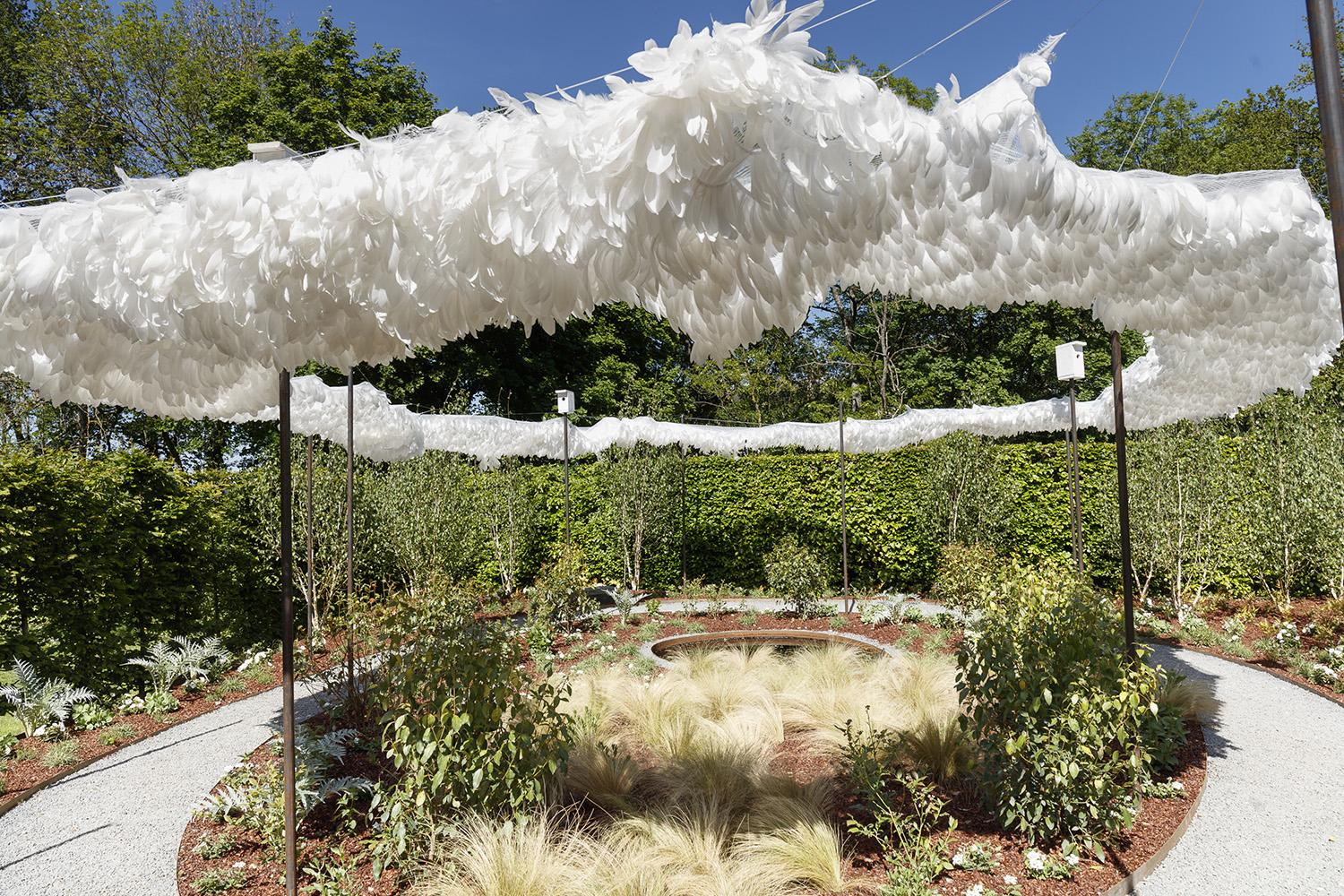In the gardens of a chateau in the Loire Valley stands a soft sculpture designed and built by wHY’s New York landscape studio.
It’s called “Float Flutter Flow,” and for good reason.
Its centerpiece is a canopy of 46,000 white goose feathers sewn onto cotton bias and attached via snap ties to a near-transparent mesh netting, hung by cables attached to steel poles.
The canopy’s designed to guide visitors through the garden, filter the light and protect them from the weather. It’s also designed to let life and beauty evolve – especially the local bird population.
wHY developed it for the Festival Jardins at Domaine Chaumont sur Loire, an annual experimental garden festival. “You apply and pitch their theme and they select 15 to 20 projects,” says Mark Thomann, director of the studio. “Once selected, you go and build the garden and they hold the festival in November.”
This year’s theme was “Gardens of Paradise.” And wHY took a two-pronged approach in response. “One was beauty as a way of addressing paradise, and then there was materiality within that beauty,” he says. “So what does beauty mean in the context of a garden – a formal context or a return to a lost wilderness?”
The goose feathers are a metaphor. “The feathers protect the bird, help it fly and make it stand out for mating purposes,” he says. “So we wondered if we could start to look to wildlife and how it adapts – to address the question of climate and global warming?”
The real questions wHY is asking are whether paradise exists anymore – and if people can adapt to a changing planet. Their answers are complex. “We can adapt and we will adapt,” he says. “But we need to be grounded in our thinking and to reality, and then to look to smaller projects – like the level of soil and gardens, and through that get to a more realistic approach to addressing climate.”
The firm’s solution is also complex. Its canopy of white feathers offers a cooling effect on birds in summer. It’s surrounded by plant birds love, like viburnums, blueberries and artichokes. Five birdhouses are sprinkled around the perimeter.
It’s a minimalist solution for a wilderness challenged by global change – and it operates on large and small scales at once.
Better yet, it’s light as a feather.
For more, go here.
[slideshow id=2075]

